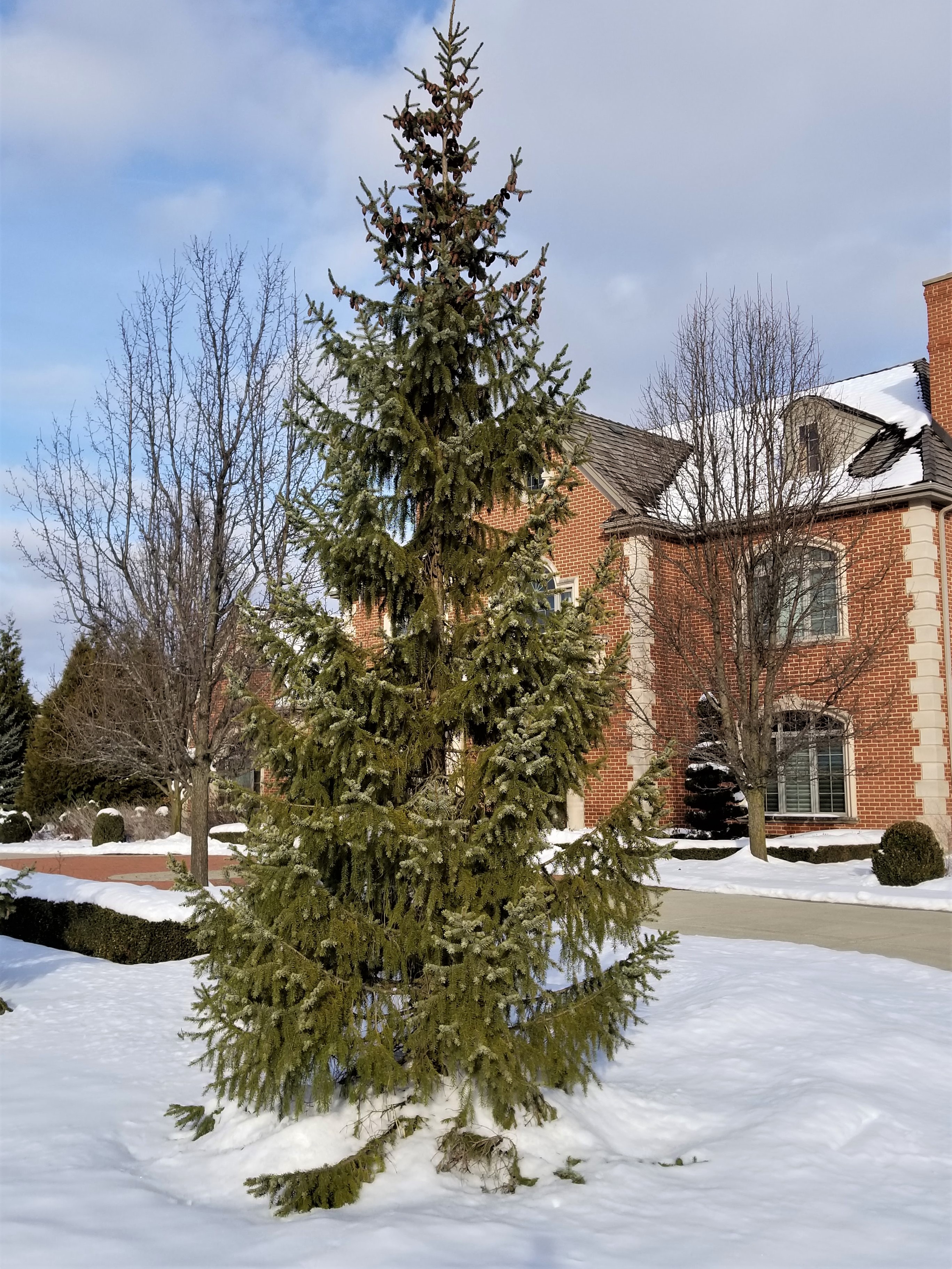This post on Picea omorika is as much a geography lesson as it is a horticultural tutorial. The Serbian Spruce, often misread “Siberian,” is native to a small area of the Balkans in Western Serbia, Eastern Bosnia, and Herzegovina. If you don’t know where that is, Google it! Hint: It’s nowhere near Siberia. The specific name of Serbian Spruce, omorika, is the Serbian name for Spruce.
Picea omorika is, in my opinion, the most handsome of the spruces. (I rate Picea orientalis, my Plant of the Week two weeks ago, a close second.) It has flat needles, unusual for spruces, that are dark green on the top and have white bands on the lower surface, not unlike Canadian Hemlock. It is a graceful tree with drooping branches that turn upward at the tips. In its native habitat it may reach heights exceeding 100 feet, but in a landscape setting it usually tops out at 50 to 60 feet.
Serbian Spruce is native to limestone soils, usually found on steep North facing slopes. Ideally, soils should be moist but well drained. It will not tolerate flooding, as I unfortunately found out a few years ago with the tree I had planted in an area of my yard that gets periodic flooding. Even though it is native to limestone soils and generally grows in full sun, Serbian Spruce will tolerate a wide range of soil pH and semi-shade. Avoid planting it on a site where winds are strong.
Picea omorika, like other spruces, is monoecious. Cones mature at a length of about two inches. When first ripening, they are an attractive violet-purple color and later turn cinnamon-brown.
Many cultivars, mostly dwarfs, have been selected from the species. Two that are not dwarfs are ‘Bruns’ and ‘Pendula.’ ‘Bruns’ is a narrow conical plant that grows about six to eight inches per year. After 10 years it will be about six feet tall and two feet wide. Rate of growth seems to speed up as it gets older. ‘Pendula’ is a slender, full-sized plant with branches that droop a bit more than the species. ‘Nana’ is probably the most popular of the cultivars and most readily available from garden centers. It starts out with a globe form, but then becomes dense and conical with age. At 10 years it is a round three-foot plant with a growth rate of three to four inches per year. It then speeds up to six to eight inches per year and develops a central leader. Eventually it will be a dense, conical 10-to-15-foot plant.
‘Pimoko’ grows at a tempo of two to three inches per year. It is a very attractive pin-cushion-shaped plant. A cultivar I recently obtained is ‘Osmaston #1.’ It is a small, globe-shaped plant that extends its size by about two inches per year. Another recent acquisition is ‘De Ruyter.’ It is an irregular upright growing plant that will be about six feet tall and four feet wide after 10 years.
Now that you know where Serbia is, get a few of the plants named after this region. You won’t be disappointed, nor will you be sent to Siberia! You might even get a few more correct questions on Jeopardy!






